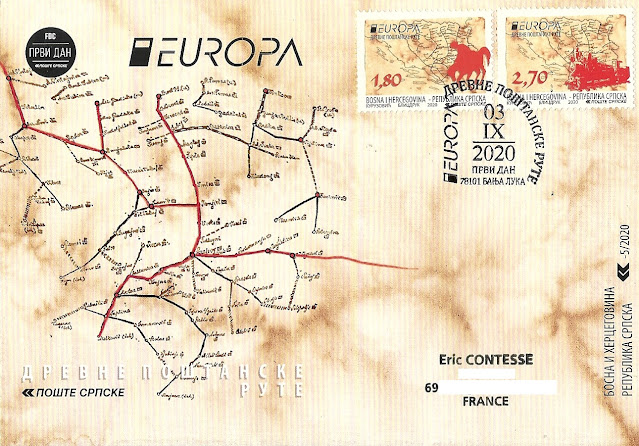TAD "Bonne année 1.1.11" et flamme postale "Covid-19" sur carte de Singapour !
Près de 10 ans après son envoi, j'ai reçu récemment cette carte postale de Singapour incluant initialement un TAD spécial du musée philatélique marquant le 1er jour de la nouvelle année 2011 et cette date du "1.1.11", recherchée à l'époque par de nombreux collectionneurs !
Merci beaucoup Terence pour cette carte postale incluant également à l'origine une vignette de complément en haut à gauche (0,26$), curieusement datée du 13 octobre 2010, et cet impressionnant cachet en bas à gauche, appliqué avec une encre rouge par le musée philatélique de Singapour avec mention de cette date spéciale du 1er janvier 2011.
Le timbre utilisé ici (1st Local) fait partie d'une série (5 timbres) émise le 23 février 2005 consacrée à différents messages de salutations ("Greetings"), représentant ici un animal (chien ?) conçu à partir de ballons de baudruche.
Almost 10 years after it was sent, I recently received this postcard from Singapore initially including a special postmark from the Philatelic Museum marking the 1st day of the new year 2011 and this date "1.1.11", sought after at the time by many collectors!
Thank you very much Terence for this postcard also originally including a top left supplemental label ($ 0.26), oddly dated October 13, 2010, and this impressive lower left cachet, applied with red ink by the Singapore Philatelic Museum with mention of this special date of January 1, 2011.
The stamp used here (1st Local) is part of a series (5 stamps) issued on February 23, 2005 devoted to various Greetings messages, here depicting an animal (a dog?) made from inflatable balloons.
La poste de Singapore a en effet mis en circulation plusieurs oblitérations mécaniques de ce type à partir du mois d'avril 2020, incluant des slogans liés à la lutte contre l'épidémie de Covid-19.
Cerise sur le gâteau, cette carte a transité par erreur par Macao le 20 septembre 2020 (a priori, la date n'étant pas très lisible sur le TAD) où cette marque "Missent to Macau" ("Envoyé par erreur à Macao") a été appliquée.
The other side of this great postcard above with some of Marina Bay's iconic landmarks, the Ferris wheel (The Flyer) on the left and the Marina Bay Sands Resort on the right.




















